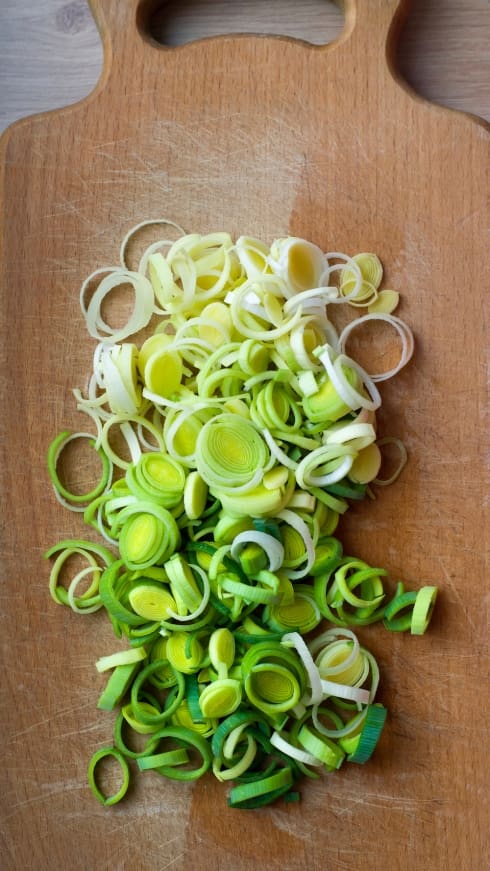Interested in introducing more plants/plant-based foods into your diet? You’re not alone! To help make it happen, we asked superstar dietitian and author of Eat More Plants Desiree Nielsen about the ins and outs of "going green" (and yellow, and red, and orange) this new year. —Noa Nichol
Hi Desiree! Please tell us a little bit about yourself to start.
I’m a registered dietitian with a focus on plant-based diets, anti-inflammatory nutrition and digestive health. I’m the host of The Urban Vegetarian on CTV Life and author of Eat More Plants cookbook. I’ve got two kids, nine and four, and live in East Vancouver.
We’re clear on vegetarianism and veganism, but what does it mean to be/eat plant-based? Does plant-based mean no meat?
I love the term plant-based because it’s inclusive; people can really define it for themselves. In my opinion, plant-based eating means that the majority of what you eat is plants (as opposed to animals like meat or dairy). You may be 100 per cent plant-based (vegan), or you may leave a bit of wiggle room for the occasional egg or piece of fish. As a dietitian, I think it’s important to emphasize the plant in plant-based. This means that you eat more actual plant foods such as fruits, vegetables, nuts and legumes as opposed to hyper-processed meat alternatives and snack foods. While reducing any animal consumption improves animal welfare and environmental costs, eating whole foods is where the magic is for feeling your best physically.
Why go plant-based? What are the benefits?
I can’t think of a better way to improve your energy levels, feel better and reduce your risk of chronic disease than eating a plant-based diet. Whole plant foods are what we call "nutrient-dense" meaning that they pack a tonne of nutrition—vitamins, minerals, phyto-chemicals—into each bite. In order for each and every one of our cells to function at their best, they require a host of nutrients for daily growth and repair. Our modern food system is filled with calorie-dense (and nutrient-poor) hyper-processed and restaurant foods. While our body learns to cope with these nutrient-poor foods, slowly, damage and suboptimal functioning accumulates and that’s when we feel sluggish, inflamed, our cholesterol or blood pressure may start to rise—or perhaps our blood sugars go haywire. The chronic disease rates we face are not an enigma; they are the result of eating less healthful processed foods, way too much stress and not moving our body. This is why they are called "lifestyle diseases"—lifestyle drives them (for the most part) and it is lifestyle that can help them heal.
Simple ways to start intro-ing more plant-based foods into our diets?
Think about the foods you love to eat most, and how to sneak in those plants! Typically, we enjoy new foods most when they are in familiar forms. For example, lentils work so well in a marinara sauce in place of ground beef. Or, you could add roasted squash or an almond-based ricotta cheese into your favourite lasagna recipe. Most of us love chili and it’s one of the easiest recipes to ditch the meat and still enjoy all of those flavours you crave. Some tips: try a chickpea or tofu scramble instead of eggs; experiment with different veggies burgers or plant-based yogurts until you find one you love (or make your own!); hemp hearts are a great way to add plant-based protein to morning staples like smoothies, yogurt or oatmeal; and/or try swapping soy milk or oat milk in your morning latte.
Any tips regarding picky kids who *think* they don’t like eating plants?
Kids are all about foods that feel familiar to them. If they love mac and cheese, why not try a plant-based version made with cashews and butternut squash? Another way to encourage a sense of play is to get them involved. For example; have kids choose one new plant food at the grocery store each week—such as celery root, lentils or barley—and research a recipe to make with it. Or, hold a taste test: which is their favourite plant-based milk alternative? Buy smaller containers of five different types and hold a formal taste test where everyone can vote on their favourite to add to the weekly shopping rotation.
Love your cookbook, Eat More Plants! Do you have a fave plant-based recipe you could share?
Thank you! It was a true labour of love: a love of the plant foods themselves, of cooking (and eating!) and so much excitement to share these recipes with others. People often greatly underestimate the effects of whole food plant-based eating, they can’t believe how good they feel when they start eating this way. You can eat in a way that is really healthy, that still tastes good and is joyful to eat. Check out my recipe for Lentil and Walnut Tacos here!
Final, fun question: your all-time fave plant to eat, and why?!
After kale, which is still my favourite green veggie, it’s chickpeas—they are so versatile! You can make a scramble or chickpea "tuna". You can roast them for a salty snack or blend them into a creamy hummus. And they’re flavour goes so well in so many dishes, from curries to pastas to casseroles. Most of us really don’t eat enough legumes; they are super high in fibre to support a healthier gut and contain plenty of plant-based protein and minerals to keep us energized.


Be the first to comment